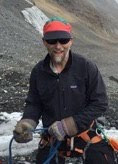Packing up, hopefully flying out!

Today was a day of packing boxes, getting things ready to be shipped back to Dartmouth. By the middle of the day, we'd gotten our gear all packed and "palletized" which means that it's strapped down to an aluminum Air Force pallet, the basic unit of cargo on the LC-130 aircraft on which we fly. Above, our cargo sits ready on its pallet, waiting for the plane! Once this was done, our team joined the GA pool. GA is short for General Assistant, which means doing odd jobs around camp to help out. Our task was to re-set some flags marking hazardous areas around camp. Job almost complete, we'll work on it more tomorrow while waiting for a plane!

















